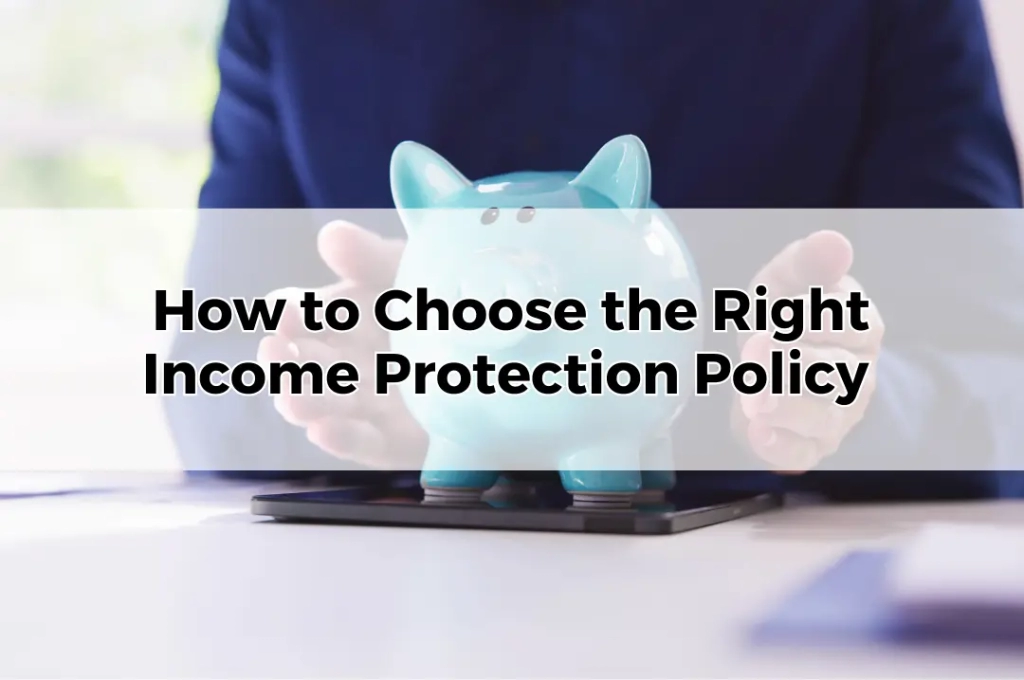How to Choose the Right Income Protection Policy
Table of Contents
ToggleSelecting the right income protection policy is a crucial decision that can safeguard your financial well-being in times of adversity. With numerous options available, understanding the nuances of each policy is essential. This guide will provide an in-depth look into the critical factors to consider when choosing an income protection policy in Australia.
Understanding Income Protection Insurance
What is Income Protection Insurance?
Income protection insurance is designed to provide you with a steady income if you are unable to work due to illness or injury. It typically covers up to 75% of your pre-tax income, ensuring you can maintain your lifestyle and meet financial obligations during recovery.
Importance of Income Protection
The significance of income protection cannot be overstated. It acts as a financial safety net, providing peace of mind that your income is secured, even if unforeseen health issues prevent you from working. This security allows you to focus on recovery without the added stress of financial strain.
Types of Income Protection Policies
Indemnity Value Policies
Indemnity value policies base their payout on your income at the time of the claim. This means if your income fluctuates, the benefit amount might be lower than anticipated. These policies are generally cheaper but carry the risk of reduced payouts if your income decreases.
Agreed Value Policies
Agreed value policies provide a predetermined benefit amount agreed upon when the policy is taken out. This type offers more certainty as the benefit amount remains fixed, regardless of income changes. However, these policies often come with higher premiums.
Key Features to Consider
Benefit Amount
The benefit amount is the monthly payment you receive if you are unable to work. It is crucial to choose a benefit amount that adequately covers your living expenses, debts, and other financial commitments.
Benefit Period
The benefit period is the duration over which you will receive payments while you are unable to work. Options range from a few years to up until retirement age. Longer benefit periods provide greater security but may come with higher premiums.
Waiting Period
The waiting period is the time between becoming unable to work and when you start receiving payments. Common waiting periods range from 14 days to two years. A shorter waiting period means higher premiums but ensures quicker access to funds.
Policy Inclusions and Exclusions
Covered Illnesses and Injuries
It’s essential to understand what illnesses and injuries are covered by your policy. Comprehensive policies will cover a broad range of conditions, ensuring you are protected in various scenarios.
Excluded Conditions
Exclusions are specific conditions or situations that your policy will not cover. Familiarise yourself with these exclusions to avoid surprises when you need to make a claim.
Cost of Income Protection Insurance
Factors Influencing Cost
Several factors influence the cost of income protection insurance, including your age, occupation, health status, and lifestyle. High-risk occupations and health conditions typically lead to higher premiums.
Ways to Reduce Premiums
You can reduce premiums by choosing a longer waiting period, a shorter benefit period, or a lower benefit amount. Additionally, maintaining a healthy lifestyle can result in lower premiums.
Understanding Premium Structures
Stepped Premiums
Stepped premiums increase as you age. They start lower but can become significantly higher over time, making them more suitable for short-term coverage.
Level Premiums
Level premiums remain constant throughout the policy term. While initially more expensive, they offer cost stability and can be more economical in the long run.
Comparing Providers
Financial Stability
Choose a provider with a strong financial standing to ensure they can meet their obligations when you need to make a claim. Research ratings and reviews to gauge financial stability.
Customer Service
Excellent customer service can make a significant difference in your experience. Consider providers with positive customer service reviews and accessible support.
Claims Process
A streamlined and efficient claims process is vital. Look for providers with a reputation for handling claims promptly and fairly.
Customising Your Policy
Optional Riders
Optional riders are additional benefits you can add to your policy for extra protection. These might include critical illness cover, total and permanent disability cover, or family care benefits.
Tailoring Coverage to Your Needs
Customise your policy to fit your specific needs. This could involve adjusting the benefit amount, benefit period, and waiting period, or adding optional riders for comprehensive coverage.
Tax Implications
Tax-Deductible Premiums
In Australia, income protection premiums are generally tax-deductible. This can reduce the overall cost of your policy and should be factored into your financial planning.
Tax on Benefits
While premiums are tax-deductible, any benefits received under the policy are typically considered taxable income. Plan accordingly to avoid unexpected tax liabilities.
Common Pitfalls to Avoid
Overlooking Policy Details
Thoroughly review all policy details, including the fine print, to understand coverage, exclusions, and any other critical terms. Ignorance can lead to costly mistakes.
Ignoring Policy Reviews
Regularly review your policy to ensure it continues to meet your needs. Life changes, such as a new job or changes in income, may necessitate policy adjustments.
Choosing the right income protection policy is a pivotal step in securing your financial future. By understanding the different types of policies, key features, and potential pitfalls, you can make an informed decision that provides peace of mind and financial stability. Careful consideration and regular reviews will ensure your policy remains aligned with your needs, offering robust protection when you need it most.









